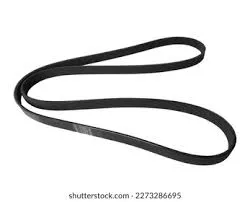- Arabic
- French
- Russian
- Spanish
- Portuguese
- Turkish
- Armenian
- English
- Albanian
- Amharic
- Azerbaijani
- Basque
- Belarusian
- Bengali
- Bosnian
- Bulgarian
- Catalan
- Cebuano
- Corsican
- Croatian
- Czech
- Danish
- Dutch
- Afrikaans
- Esperanto
- Estonian
- Finnish
- Frisian
- Galician
- Georgian
- German
- Greek
- Gujarati
- Haitian Creole
- hausa
- hawaiian
- Hebrew
- Hindi
- Miao
- Hungarian
- Icelandic
- igbo
- Indonesian
- irish
- Italian
- Japanese
- Javanese
- Kannada
- kazakh
- Khmer
- Rwandese
- Korean
- Kurdish
- Kyrgyz
- Lao
- Latin
- Latvian
- Lithuanian
- Luxembourgish
- Macedonian
- Malgashi
- Malay
- Malayalam
- Maltese
- Maori
- Marathi
- Mongolian
- Myanmar
- Nepali
- Norwegian
- Norwegian
- Occitan
- Pashto
- Persian
- Polish
- Punjabi
- Romanian
- Samoan
- Scottish Gaelic
- Serbian
- Sesotho
- Shona
- Sindhi
- Sinhala
- Slovak
- Slovenian
- Somali
- Sundanese
- Swahili
- Swedish
- Tagalog
- Tajik
- Tamil
- Tatar
- Telugu
- Thai
- Turkmen
- Ukrainian
- Urdu
- Uighur
- Uzbek
- Vietnamese
- Welsh
- Bantu
- Yiddish
- Yoruba
- Zulu
सेप . 04, 2024 19:19 Back to list
High-Quality 3D Printer Timing Belts for Precise Printing
Understanding the Importance of 3D Printer Timing Belts
3D printing technology has revolutionized the way we create and manufacture objects, providing opportunities for innovation in various fields including engineering, art, and healthcare. Central to the efficient functioning of a 3D printer is its timing belt, an often-overlooked component that plays a critical role in ensuring precision and accuracy in 3D print outcomes.
What is a Timing Belt?
A timing belt, also known as a synchronous belt, is a reinforced rubber belt used to transfer motion and synchronize the rotation of shafts in a mechanical system. In the context of 3D printers, timing belts are crucial for moving the print head along the X and Y axes. The smooth operation of these belts affects the overall print quality, as they dictate the speed and precision with which the print head moves.
Why Timing Belts Matter
The performance of a 3D printer heavily relies on its timing belts. Any wear and tear or misalignment in the belt can lead to inaccuracies, resulting in layer misalignment and poor print quality. Here are some reasons why timing belts are essential
1. Precision Movement Timing belts provide reliable and precise movement of the printer's components. They maintain the correct distances between the different parts of the printer, ensuring that the print head and build plate align correctly throughout the printing process.
3d printer timing belt

2. Reduced Backlash Backlash refers to the slight movement that occurs when changing directions. High-quality timing belts help minimize this effect, resulting in cleaner edges and better overall detail in printed objects.
3. Durability and Maintenance Timing belts are designed to last, but they can wear out over time. Regular maintenance, including checking for fraying or slack, can prolong their life. Replacing worn belts promptly can save time and resources by avoiding failed prints.
4. Adjustable Tension Most 3D printers allow for the adjustment of belt tension, which is crucial for optimal performance. A properly tensioned belt ensures that the printer operates smoothly, while too much tension can cause excessive wear, and too little tension can lead to slippage and inaccuracies.
Choosing the Right Timing Belt
When it comes to selecting timing belts for a 3D printer, there are several factors to consider, such as the material, tooth count, and profile. The most common materials used for timing belts are rubber and polyurethane, often reinforced with fiberglass or Kevlar for added strength. The right tooth pitch ensures compatibility with the printer's pulleys, which is vital for proper function.
Conclusion
In conclusion, while timing belts may seem like a minor component in the intricate machinery of 3D printers, they are central to achieving high-quality prints. Understanding their role can aid users in maintaining their printers, ensuring longevity and reliability in their 3D printing endeavors. By paying attention to this often-overlooked element, both hobbyists and professionals can enhance their printing processes and outcomes, leading to more successful projects and satisfaction in their creations.
-
Korean Auto Parts Timing Belt 24312-37500 For Hyundai/Kia
NewsMar.07,2025
-
7PK2300 90916-T2024 RIBBED BELT POLY V BELT PK BELT
NewsMar.07,2025
-
Chinese Auto Belt Factory 310-2M-22 For BMW/Mercedes-Benz
NewsMar.07,2025
-
Chinese Auto Belt Factory 310-2M-22 For BMW/Mercedes-Benz
NewsMar.07,2025
-
90916-02660 PK Belt 6PK1680 For Toyota
NewsMar.07,2025
-
drive belt serpentine belt
NewsMar.07,2025

